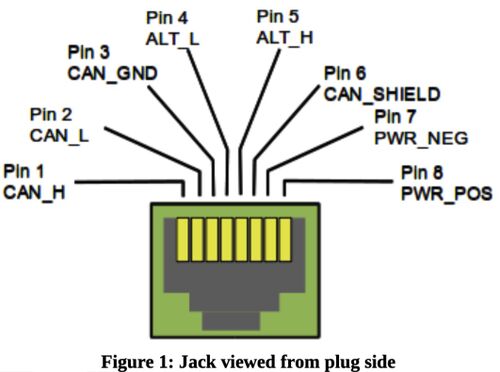Difference between revisions of "Booster Interface"
| Line 16: | Line 16: | ||
==Digitrax CS to TCS Booster or TCS CS to Digitrax Booster== | ==Digitrax CS to TCS Booster or TCS CS to Digitrax Booster== | ||
[[File:Booster Interface (LCC to Digitrax).png|800px]] | [[File:Booster Interface (LCC to Digitrax).png|800px]] | ||
| − | <br />'''Important Requirement:''' Most Digitrax boosters are not electrically isolated (sometimes referred to as "opto-isolated"). Unless using an electrically isolated booster, connect all of the Digitrax, a booster common must be used. The booster common terminal is typically labeled "GR" on Digitrax boosters and command stations and labeled "Common" on TCS boosters and command stations. For more information, see section Booster Common below. | + | <br />'''Important Requirement:''' Most Digitrax boosters are not electrically isolated (sometimes referred to as "opto-isolated"). Unless using an electrically isolated booster, connect all of the Digitrax, a booster common must be used. The booster common terminal is typically labeled "GR" on Digitrax boosters and command stations and labeled "Common" on TCS boosters and command stations. For more information, see section [[#Booster Common]] below. |
==Lenz CS to TCS Booster or TCS CS to Lenz Booster== | ==Lenz CS to TCS Booster or TCS CS to Lenz Booster== | ||
[[File:Booster Interface (LCC to Lenz).png|800px]] | [[File:Booster Interface (LCC to Lenz).png|800px]] | ||
| − | <br />'''Note:''' All Lenz Boosters are electrically isolated, however a booster common is still recommended. The booster common terminal is typically labeled "'''⊥'''" on Lenz boosters and command stations and labeled "Common" on TCS boosters and command stations. Some Lenz command stations and boosters do not have a booster common terminal. For more information, see section Booster Common below. | + | <br />'''Note:''' All Lenz Boosters are electrically isolated, however a booster common is still recommended. The booster common terminal is typically labeled "'''⊥'''" on Lenz boosters and command stations and labeled "Common" on TCS boosters and command stations. Some Lenz command stations and boosters do not have a booster common terminal. For more information, see section [[#Booster Common]] below. |
==NCE CS to TCS Booster or TCS CS to Lenz Booster== | ==NCE CS to TCS Booster or TCS CS to Lenz Booster== | ||
[[File:Booster Interface (LCC to NCE).png|800px]] | [[File:Booster Interface (LCC to NCE).png|800px]] | ||
| − | <br />'''Note:''' All NCE Boosters are electrically isolated, however, a booster common is still recommended. For more information, see section Booster Common below. | + | <br />'''Note:''' All NCE Boosters are electrically isolated, however, a booster common is still recommended. For more information, see section [[#Booster Common]] below. |
== Booster Common == | == Booster Common == | ||
A booster common provides a controlled low impedance return path between boosters for when a locomotive bridges two booster districts. It is always required | A booster common provides a controlled low impedance return path between boosters for when a locomotive bridges two booster districts. It is always required | ||
Revision as of 17:03, 25 June 2022
TCS command station and booster products (CS-105, B-106, etc...) use the NMRA Standard S-9.1.2 Power Station Interface Full Scale Interface method. TCS command station and booster products are compatible with other manufacturers' products that use the same Full Scale Interface. This includes, but not limited to, command stations and boosters from:
- Digitrax
- Lenz
- NCE
TCS command station and booster products are not directly compatible with the alternative Driver/Receiver Interface method.
Contents
Power Station Interface on TCS Command Stations and Boosters
TCS products use the OpenLCB/LCC NMRA S-9.7.1.1 CAN Physical Layer, which consists of an RJ-45 connector routing the CAN signals, power, and two ALT signals on pins 4 & 5:

TCS utilizes the ALT_L/ALT_H signals on pins 4 & 5 for the Full Scale Power Station Interface. These signals are used when connecting to other manufacturers' command stations and boosters.
Digitrax CS to TCS Booster or TCS CS to Digitrax Booster

Important Requirement: Most Digitrax boosters are not electrically isolated (sometimes referred to as "opto-isolated"). Unless using an electrically isolated booster, connect all of the Digitrax, a booster common must be used. The booster common terminal is typically labeled "GR" on Digitrax boosters and command stations and labeled "Common" on TCS boosters and command stations. For more information, see section #Booster Common below.
Lenz CS to TCS Booster or TCS CS to Lenz Booster

Note: All Lenz Boosters are electrically isolated, however a booster common is still recommended. The booster common terminal is typically labeled "⊥" on Lenz boosters and command stations and labeled "Common" on TCS boosters and command stations. Some Lenz command stations and boosters do not have a booster common terminal. For more information, see section #Booster Common below.
NCE CS to TCS Booster or TCS CS to Lenz Booster

Note: All NCE Boosters are electrically isolated, however, a booster common is still recommended. For more information, see section #Booster Common below.
Booster Common
A booster common provides a controlled low impedance return path between boosters for when a locomotive bridges two booster districts. It is always required